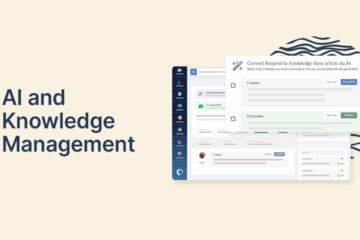Hey there! Have you heard about the latest study by the Service Desk Institute? It reveals that Enterprise Service Management (ESM) strategies have been embraced by a whopping 68% of organizations as of mid-2021, marking a significant 58% increase from just two years ago. What could have sparked such a remarkable surge in ESM adoption, you might wonder? Well, it’s likely due to the numerous benefits that ESM brings to the table.
ESM essentially involves applying IT service management (ITSM) principles and capabilities across the entire enterprise, enhancing service delivery for all non-IT departments within your organization. The key concept to grasp here is that every department acts both as a consumer and provider of services. For instance, someone in Marketing might need assistance from HR to update their name, while someone in HR might require support from Legal for a policy review. However, with each department operating differently, there’s often a lack of consistency in how requests are made across departments—something you’ve probably encountered yourself.
So, what kind of services do these departments offer? Examples include a knowledge hub from HR with FAQs on benefits, an access request form from Facilities for office visitors, a review request form from Legal for contract redlines, and a bug ticket form from Marketing for website error reports. ESM takes the best practices from IT like ticketing, service requests, and centralized knowledge bases and applies them to non-IT departments, leading to a more cohesive employee experience.
With ESM in place, you can prevent customer and employee requests from slipping through the cracks and ensure they are addressed promptly.
This post kicks off a series on the significance of ESM and how implementing it can revolutionize your business processes.
Why ESM is Vital for Success
Introducing ESM can play a crucial role in streamlining essential processes within your organization. Since every department serves as both a service provider and consumer, ESM empowers these departments to make their services more readily accessible to their consumers.
ESM empowers your departments by:
- Structured service delivery: Establishing consistent processes across all departments to minimize operational chaos and ensure standardized service delivery.
- Service accessibility: Enabling employees to request services from various domains through a single, user-friendly interface accessible via a centralized company-wide service portal.
- Visibility of service quality: Offering real-time insights into service quality and facilitating proactive enhancements.
- Accelerated service delivery: Streamlining service delivery times for quicker resolutions and enhanced user satisfaction.
- Data privacy: Safeguarding sensitive information with a uniform level of security and compliance across the organization.
Implementing an ESM solution can also support broader change initiatives or endeavors to revamp and enhance existing processes. By embracing ESM, your business can maintain seamless and consistent operations while delivering an exceptional user experience. Furthermore, ESM adoption can lead to cost savings, heightened user satisfaction, increased efficiency, and demonstrate compliance with regulatory bodies.
Core Principles of ESM
While many companies, regardless of size, have either adopted or are contemplating ITSM solutions, not all have extended their deployment to the level of ESM. Through several key principles, ESM solutions can propel enterprises to achieve unprecedented efficiency and clarity.
Efficiency
Without ESM, employees can get bogged down in error-prone manual processes that consume excessive time and yield inconsistent outcomes. In today’s landscape, nearly every department faces resource constraints while the company undergoes growth, making it challenging to keep pace with the escalating demands. Implementing an ESM solution across your enterprise can streamline processes to ensure consistent and efficient service delivery. Both critical and non-critical processes should strive for maximum efficiency to guarantee consistent, timely responses. By integrating artificial intelligence and machine learning, an ESM solution can further enhance processes.
For instance, instead of sending an email requesting a website update, the Web/Marketing team can set up a “Web Change Request” form that captures all necessary information upfront, minimizing back-and-forth communication. These requests can then follow a predefined workflow set up by the marketing/web team, outlining all steps, notifications, and approvals required for the change to move from intake to production. Streamlining such processes enhances efficiency, eliminates errors, and reduces delays between departments.
By enhancing efficiency, employees can reduce manual processes, freeing up time to address more critical issues. With a well-designed ESM solution tailored to your business needs, you can quickly see a return on investment as processes are expedited, employees can focus on crucial matters, and time-consuming issues are promptly resolved, resulting in an improved user experience.
Standardized Service Delivery
Many departments currently tackle tasks in an ad-hoc manner, using their own tools, leading to a steep learning curve for interactions across different departments. ESM strategies are incredibly advantageous for enterprises as they enable organizations to deliver employee services efficiently and effortlessly. ESM enhances service delivery and execution by automating and simplifying many manual processes, freeing up employees and fostering efficiencies that were previously absent.
By establishing a uniform method of consuming services from a service provider (department), interactions between departments become more straightforward, and service delivery becomes standardized throughout the enterprise. Standardized service delivery ensures consistent experiences across all departments, fostering reliance on consistent outcomes.
Improves Knowledge Management and Support
Today, many departments harbor critical information vital to employee success, but accessing this information can be a challenge and sometimes relies on individual memory. When knowledge is scattered and unmanaged, it hampers new employees’ efficiency and autonomy while elevating the risk of processes being lost or forgotten. For instance, if key processes reside with a departing employee, their exit could disrupt the organization significantly. Embracing ESM for knowledge management ensures employees have a central repository containing all the information they need within each department.
Moreover, implementing ESM for knowledge management can dissolve silos between departments, allowing all employees to access the same information and comprehend the processes required to fulfill tasks and requests. No longer will employees need to hunt down specific individuals in particular departments for information or tasks. Instead, they can refer to the department’s central repository for all necessary knowledge. This fosters efficiency and ensures consistent outcomes.
Enhanced User Experience
As mentioned earlier, the speed and accuracy of issue resolution significantly impact user experience. Before the advent of ESM, manual processes often led to poor execution or prolonged resolution times, leaving employees clueless about where to find answers. When access to information and assistance is challenging, employees may opt to forego seeking help altogether, resorting to trial and error, which dampens the user experience.
With an ESM solution in place, employees gain access to the knowledge and systems required to address their tasks and needs. If they cannot resolve issues independently, they can submit a ticket or request with confidence, knowing it will be addressed by someone capable of resolving the issue. Self-service technology empowers employees to address their own issues and connect with the right individuals when necessary.
Think of it as chatting with a customer service representative on your favorite online shopping site. When faced with an issue or query beyond your expertise, you can engage with the company’s customer service team and resolve the matter promptly. Another way ESM enhances user experience is through continuous feedback loops with users. After an interaction with a department, users can rate their experience and provide feedback, enabling departments to incrementally enhance their services. By incorporating self-service technology into the ESM solution, employees derive greater satisfaction from their experience.
Simplicity through Automation
Human error is a significant source of frustration for employees and customers. Unfortunately, when humans manage processes, errors are inevitable. By implementing an ESM solution, critical processes prone to errors or time-consuming tasks can be automated or predefined, reducing the likelihood of errors. Once again, an ESM solution optimizes processes, minimizes issues, and errors, leading to improvements across the board. By simplifying previously complex processes, employees enjoy an improved experience and can focus on pressing matters.
Aligning ESM to Business Objectives
Implementing IT Service Management can be quite intricate. Given that ESM is an extension of ITSM, it can also be needlessly complex based on your chosen software vendor and partner. When expanding ITSM beyond IT, we recommend prioritizing culture and people above all else. Understand how existing processes within a department hinder their business goals. When selecting software to bolster your strategy, be wary of overly complex ITSM-style software that non-technical teams might struggle to implement. Non-IT individuals accustomed to user-friendly software like Asana, Workday, Wrike, Trello, and Monday.com will expect request intake, ticket tracking, and knowledge bases that are intuitive and require no coding expertise to modify.
To address these challenges, adopting an ESM strategy should be approached as a customer-centric strategy tailored to enhance service delivery—regardless of the service. Aligning your ESM strategy with business objectives and the genuine needs of end-users should be a primary focus during adoption and implementation, ensuring any automated processes and changes directly address existing issues and cater to employee concerns and frustrations.
To successfully implement an ESM strategy, the solution must prioritize your employees, delivering a consistent experience they can rely on.
We’re excited to announce a significant enhancement to SolarWinds Service Desk, expanding our offerings beyond IT. We believe we offer one of the most user-friendly Service Desks available, and with ESM, we’ve made it even simpler for your non-IT departments. If you’d like to learn more, sign up for our webcast showcasing ESM and explore our feature page.



